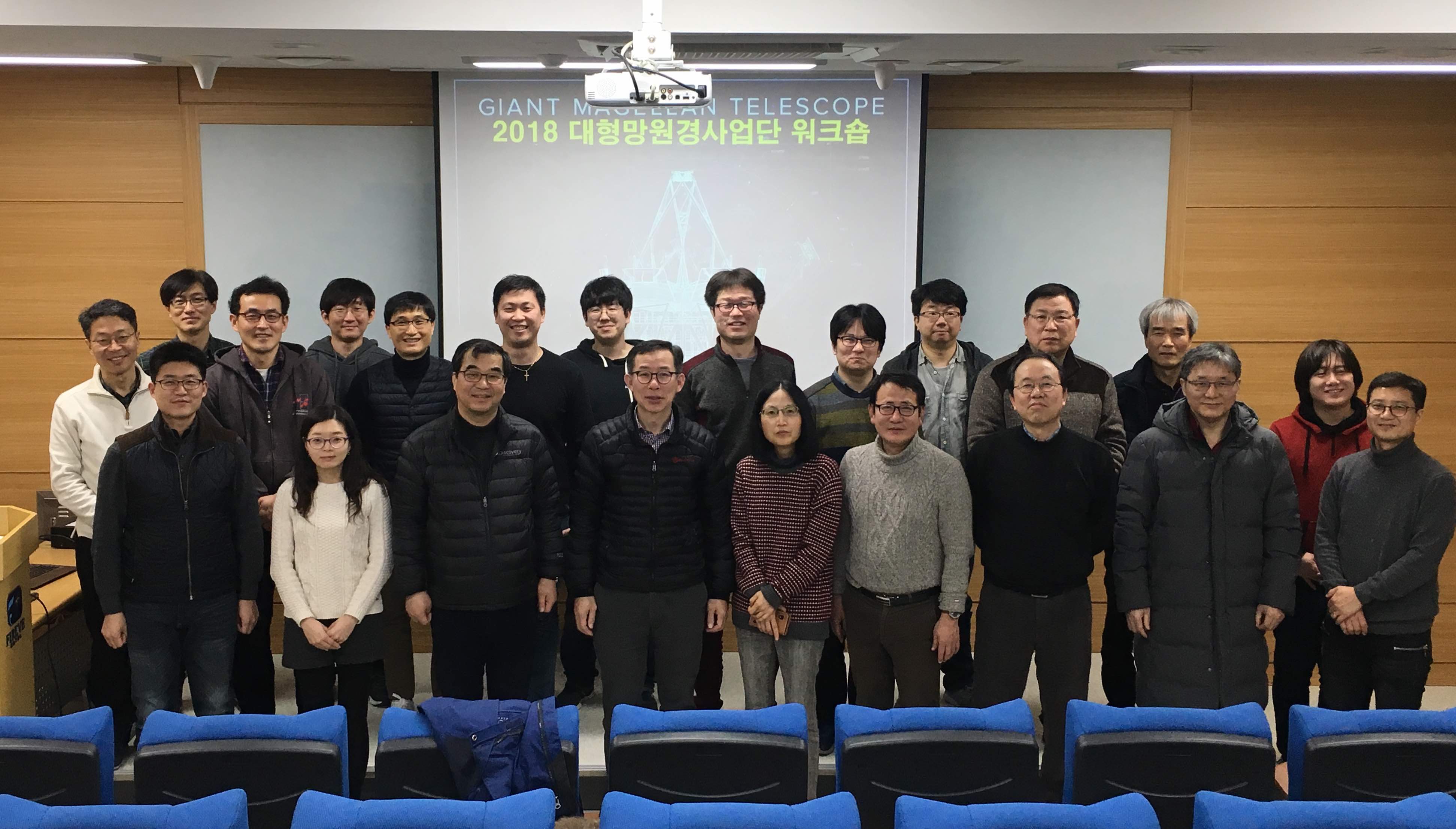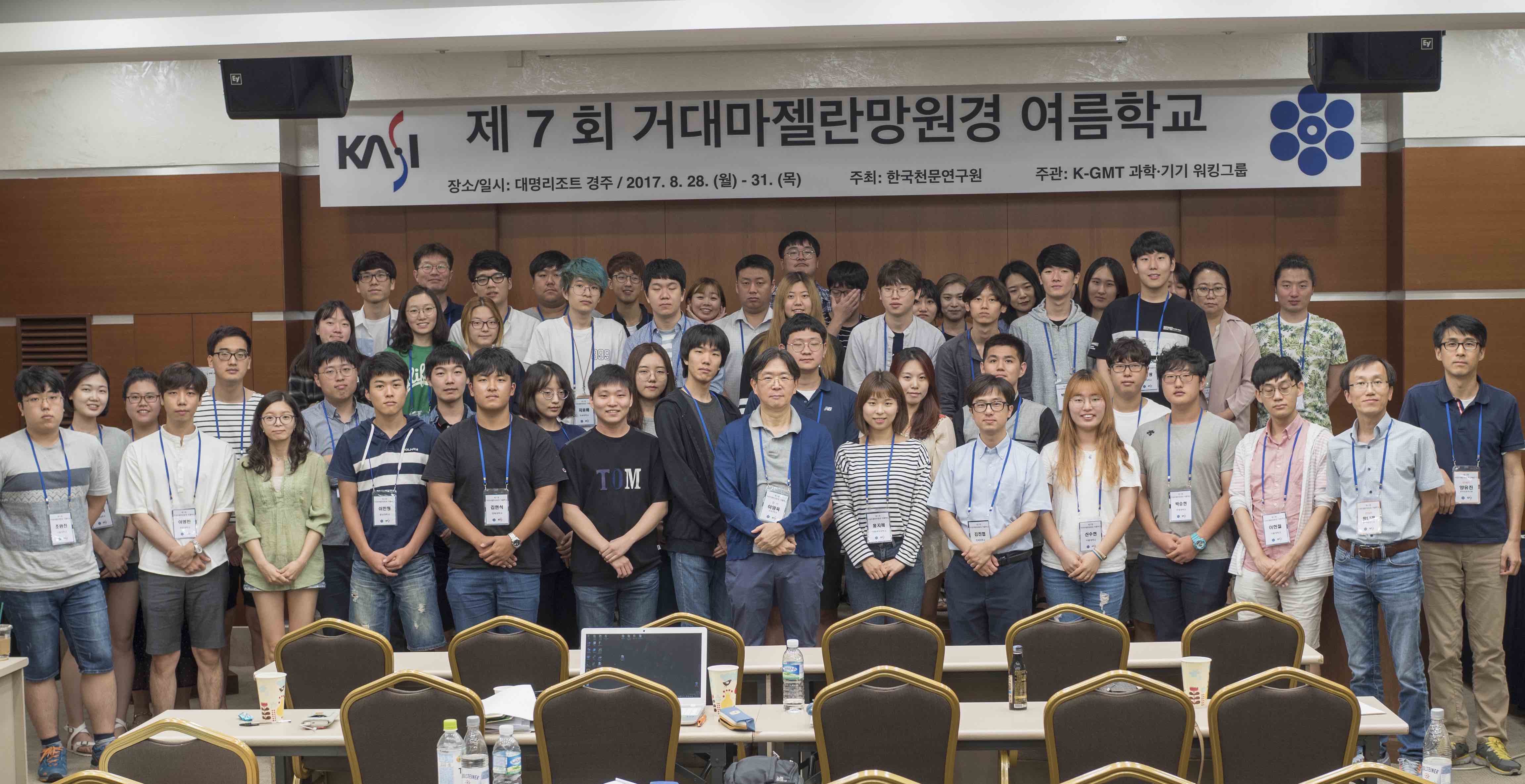Introduction
Korea Astronomy and Space Science Institute (KASI) is a partner institute of the Giant Magellan Telescope (GMT) consortium, which includes other institutes from USA, Australia, and Brazil. The GMT consortium is constructing an extremely large telescope and the Korean GMT (K-GMT) is a Korean project aimed at participating in the construction of GMT, development of state-of-art instruments, and preparation of GMT sciences. The GMT is one of the world largest optical/infrared telescopes with a 25.4 m aperture, consisting of seven 8.4 m segmented primary mirrors. It will be operational from 2020 at the Las Campanas Observatory in Chile, one of the best places for astronomical observations on our planet.
Korea Astronomy and Space Science Institute (KASI) is a partner institute of the Giant Magellan Telescope (GMT) consortium, which includes other institutes from USA, Australia, and Brazil. The GMT consortium is constructing an extremely large telescope and the Korean GMT (K-GMT) is a Korean project aimed at participating in the construction of GMT, development of state-of-art instruments, and preparation of GMT sciences. The GMT is one of the world largest optical/infrared telescopes with a 25.4 m aperture, consisting of seven 8.4 m segmented primary mirrors. It will be operational from 2020 at the Las Campanas Observatory in Chile, one of the best places for astronomical observations on our planet.
Background
Astronomical telescopes are a fundamental instruments in modern astronomy, since it is impossible to detect faint light from distant celestial objects without telescope. The light collecting power of a telescope is proportional to the square of its diameter and hence bigger telescopes can study farther universe. Since Galileo Galilei first used his small telescope for observing the sky in 1609, astronomers have been ever building bigger telescopes in order to study the more distant stars and galaxies in the universe. While small telescopes could be made by just a single person, the complexity and diversity of the technology adopted in telescope construction along with the cost grow substantially with the growth of the size. Hence, the largest astronomical telescopes in late 20th century, the size of which are greater than 8 meters, require more than one institutions and sometimes multiple countries for their construction and operation. In the first decade of 21st century, astronomers started projects that builds extremely large ground-based telescopes whose primary mirrors are about 30 meters in the diameter. There are three different such projects and all of them are aiming to finish the construction by the middle of 2020s. Korea is participating one of such project, called the Giant Magellan Telescope (GMT) project since 2009. GMT is an international project to construct a 25.4 meter telescope at the Las Campanas Observatory in Chilean Andes. The project started in 2003, and the beginning of science operation is planned in 2024.
Astronomical telescopes are a fundamental instruments in modern astronomy, since it is impossible to detect faint light from distant celestial objects without telescope. The light collecting power of a telescope is proportional to the square of its diameter and hence bigger telescopes can study farther universe. Since Galileo Galilei first used his small telescope for observing the sky in 1609, astronomers have been ever building bigger telescopes in order to study the more distant stars and galaxies in the universe. While small telescopes could be made by just a single person, the complexity and diversity of the technology adopted in telescope construction along with the cost grow substantially with the growth of the size. Hence, the largest astronomical telescopes in late 20th century, the size of which are greater than 8 meters, require more than one institutions and sometimes multiple countries for their construction and operation. In the first decade of 21st century, astronomers started projects that builds extremely large ground-based telescopes whose primary mirrors are about 30 meters in the diameter. There are three different such projects and all of them are aiming to finish the construction by the middle of 2020s. Korea is participating one of such project, called the Giant Magellan Telescope (GMT) project since 2009. GMT is an international project to construct a 25.4 meter telescope at the Las Campanas Observatory in Chilean Andes. The project started in 2003, and the beginning of science operation is planned in 2024.
Video



